From Bibu Biennial & ASSITEJ Artistic Gathering 2022
By Melissa Hekkers
I feel that the only way to really understand how Birutė Banevičiūtė works with babies and young audiences is by watching her go about it.
Having attended her seminar as an “outsider” in that I’m not a performing arts professional, I internalised her methodology with humanity. As a mother, it’s outstanding how all of her interactions with young children seem to be founded on her sound understanding of the importance of just simply letting one be.
It was within the naturally lit bright space of Helsingborg’s public library that Birutė began to unravel her longstanding experience in understanding how very young audiences express themselves through movement, or what she calls dance perception.
Indeed, it is her long-term research as a choreographer and dance educator that birthed her methodology. As she revealed to me during an interview after her seminar, Birutė started materialising performances for children in 2009, after she had worked as a dance educator in a university teaching future dance pedagogues as well as a teacher for kindergarten children.
“It’s all this experience and research, for more than 20 years, that I’ve been building on that led me to focus on performances for babies and lead educational seminars like the one today,” she explains.

Grounded in all this experience, her methodology introduces her approach to creating sustainable interactions between children and adults within performing arts, while she focuses on children from birth until the age of two years, a time when first movement experiences can be guided in a natural and sustainable way.
“My first performance for children was for three to six years old,” recalls Birutė, “at the time, I was working in kindergarten, with those ages and I kind of related to them, I thought that I knew that age the most,” she adds.
As time went by, and as she describes, she gradually became more interested in early ages, especially because in Lithuania, where Birutė is from, there wasn’t anything in place. Indeed, she is known as the first Lithuanian educator of dance art in Lithuania.
On location in Helsingborg, a dozen participants including myself get to witness Birutė’s approach. Having invited a toddler to work with her, we all sat around Birutė, who gently approached both mother and child in slow movements, first by conscientiously moving her feet and legs, and eventually introducing bright coloured ribbons to the baby. It was a very special experience to feel the peace in the room and the anticipation of the baby’s reaction who at times did seem to almost copy Birutė’s motions and at others sat in contemplation of what was going on.
“How do you perceive dance when you don’t see with your eyes?”
Birutė’s curiosity about how babies think, her need to understand them, and the challenge of creating a performance that would interest an audience which cannot be asked what they like is what has led her to create performances and dance classes with blind and disabled children. “How do you perceive dance when you don’t see with your eyes?” she wonders.

In a nutshell, her dance classes contain guided processes where babies explore basic elements of dance, movement, and objects that induce different reactions. These activities lead children into the dance world in terms of cognition and development of imagination, creativity as well as coordination, and balance and fine motor skills, with no verbal instructions for the babies. In turn, adults, most often parents, are invited to give time and space for children’s decision-making and self-expression and learn how to notice and read children reactions which are mostly kinaesthetic.
The foundation of Birutė’s interactions is based on creating a safe space to which the audience can react. Once that has been established, she starts building on that without knowing how things will develop. Nothing is choreographed, any reaction is admissible, no expectations are set.
“This work is also probably connected to my own experience as a parent, having raised my own kids, as well as a choreographer. It was very challenging to find the right structure, the right concept, and find out how to make performances that would interest babies when you can’t ask them what interests them,” says Birutė. “You kind of have to have something theoretical in mind and, but then, of course, I also learned that I need to meet babies during the creative process.”
And it’s during the creative process that Birutė witnesses the reactions and difference in each child. “You have to respect them, you have to give them time to decide, you have to respect their decision,” she says, “[then] they somehow feel this respect and then they start to trust you.”
“We all want our children to be safe and unfortunately that’s when we start controlling them”
The moment the performance begins is when the magic happens – when a baby has finally understood that there’s a safe place to interact and there will be no judgement towards them. As Birutė explains, parents have certain expectations of their children as well as the urge to tell them what’s right or wrong, what to be looking at, how to react to certain situations and in turn judge them when they’re not in sync with that.
“We all want our children to be safe and unfortunately that’s when we start controlling them. As parents, instead of letting babies and young children go about their being, we do things for them all the time, and in that process we unconsciously tell them that doing new things (for example) is either dangerous or that they’re too young to do it, or not able to do it etc. In western societies in particular, we want results from our children but the key is to wait. Whilst I’m working with them, if they’re not interested in something, that’s okay, I’ll try again and propose something else, it’s about respecting their decisions”, she explains.

Throughout the years and through her work, Birutė has witnessed children react completely differently than what parents anticipated. She has witnessed usually very reserved babies take very well to the stage, and has had to wait for a hyperactive, extroverted baby for over 20 minutes before he felt comfortable leaving his mother. In her classes, she’s also witnessed neurodivergent children move their bodies in ways she initially thought would not be possible.
When asked about what personal gain she gets from her work, Birutė reflects that she’s “really grateful that they allow me to be with them, I’m grateful that they trust me and bring me this kind of inner peace and confidence, because they don’t judge you, they’re very honest with you.”
“Trust is something incredible. It’s such a gift for me, I’ve really made a transformation inside myself as a person, but also as an artist … the leap from being so concentrated on work that would be accepted by someone, that I would produce some brilliant idea, that I created a perfect choreography to what I’m doing now is huge, because it’s not about all that. It’s about being together. It’s about understanding each other and letting that develop. It’s about letting children contribute in their own way; maybe they contribute with something very small, or something that’s not obvious, but that’s their contribution… whatever they contribute, we have to be very grateful and that’s how they will learn to be grateful if someone contributes something to them, it’s a two way process,” she concludes.
Birutė Banevičiūtė will be touring with Dansema Dance Theater’s “World Without Eyes”, a performance-research for Blind and partially sighted children between 1-6 years in Bucharest, Romania with AREAL Collectiv, in Nicosia, Cyprus with ASSITEJ Cyprus and Isola del Giglio, Italy with Segni de’infanzia Festival with the support of Perform Europe as part of the IIAN Making Waves! project.
Birutė Banevičiūtė is a Choreographer and artistic director of dance theatre Dansema, as well as researcher and Doctor of Social Sciences.
Melissa Hekkers
Melissa Hekkers is a freelance journalist and author.
Her most recent book, Amir’s Blue Elephant, is a creative non-fiction based on her experiences working with refugees, in Lesvos, Greece. In 2018, she launched My Cyprus Mandala, an interactive educational book series on the natural and cultural heritage of Cyprus. In 2007, she published her first children’s book ‘Crocodile’, which won the Cyprus State Illustration Award. Her second children’s book Flying across Red Skies (2012) was nominated for the Cyprus State Literary award. Her third children’s book ‘Pupa’ (2014) was adapted as a theatre play in 2019.




